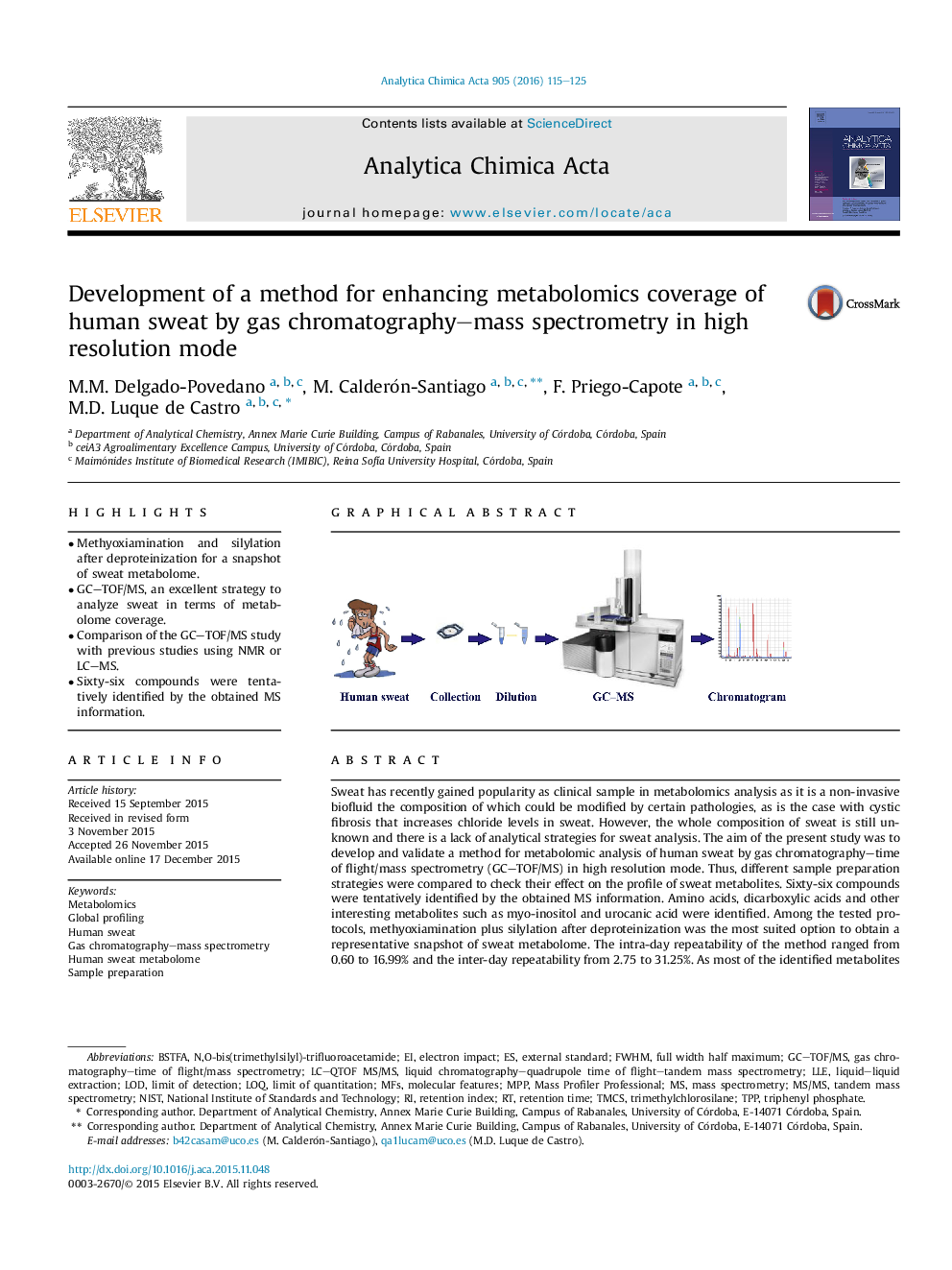| کد مقاله | کد نشریه | سال انتشار | مقاله انگلیسی | نسخه تمام متن |
|---|---|---|---|---|
| 1163178 | 1490927 | 2016 | 11 صفحه PDF | دانلود رایگان |
• Methyoxiamination and silylation after deproteinization for a snapshot of sweat metabolome.
• GC–TOF/MS, an excellent strategy to analyze sweat in terms of metabolome coverage.
• Comparison of the GC–TOF/MS study with previous studies using NMR or LC–MS.
• Sixty-six compounds were tentatively identified by the obtained MS information.
Sweat has recently gained popularity as clinical sample in metabolomics analysis as it is a non-invasive biofluid the composition of which could be modified by certain pathologies, as is the case with cystic fibrosis that increases chloride levels in sweat. However, the whole composition of sweat is still unknown and there is a lack of analytical strategies for sweat analysis. The aim of the present study was to develop and validate a method for metabolomic analysis of human sweat by gas chromatography–time of flight/mass spectrometry (GC–TOF/MS) in high resolution mode. Thus, different sample preparation strategies were compared to check their effect on the profile of sweat metabolites. Sixty-six compounds were tentatively identified by the obtained MS information. Amino acids, dicarboxylic acids and other interesting metabolites such as myo-inositol and urocanic acid were identified. Among the tested protocols, methyoxiamination plus silylation after deproteinization was the most suited option to obtain a representative snapshot of sweat metabolome. The intra-day repeatability of the method ranged from 0.60 to 16.99% and the inter-day repeatability from 2.75 to 31.25%. As most of the identified metabolites are involved in key biochemical pathways, this study opens new possibilities to the use of sweat as a source of metabolite biomarkers of specific disorders.
Figure optionsDownload as PowerPoint slide
Journal: Analytica Chimica Acta - Volume 905, 28 January 2016, Pages 115–125
